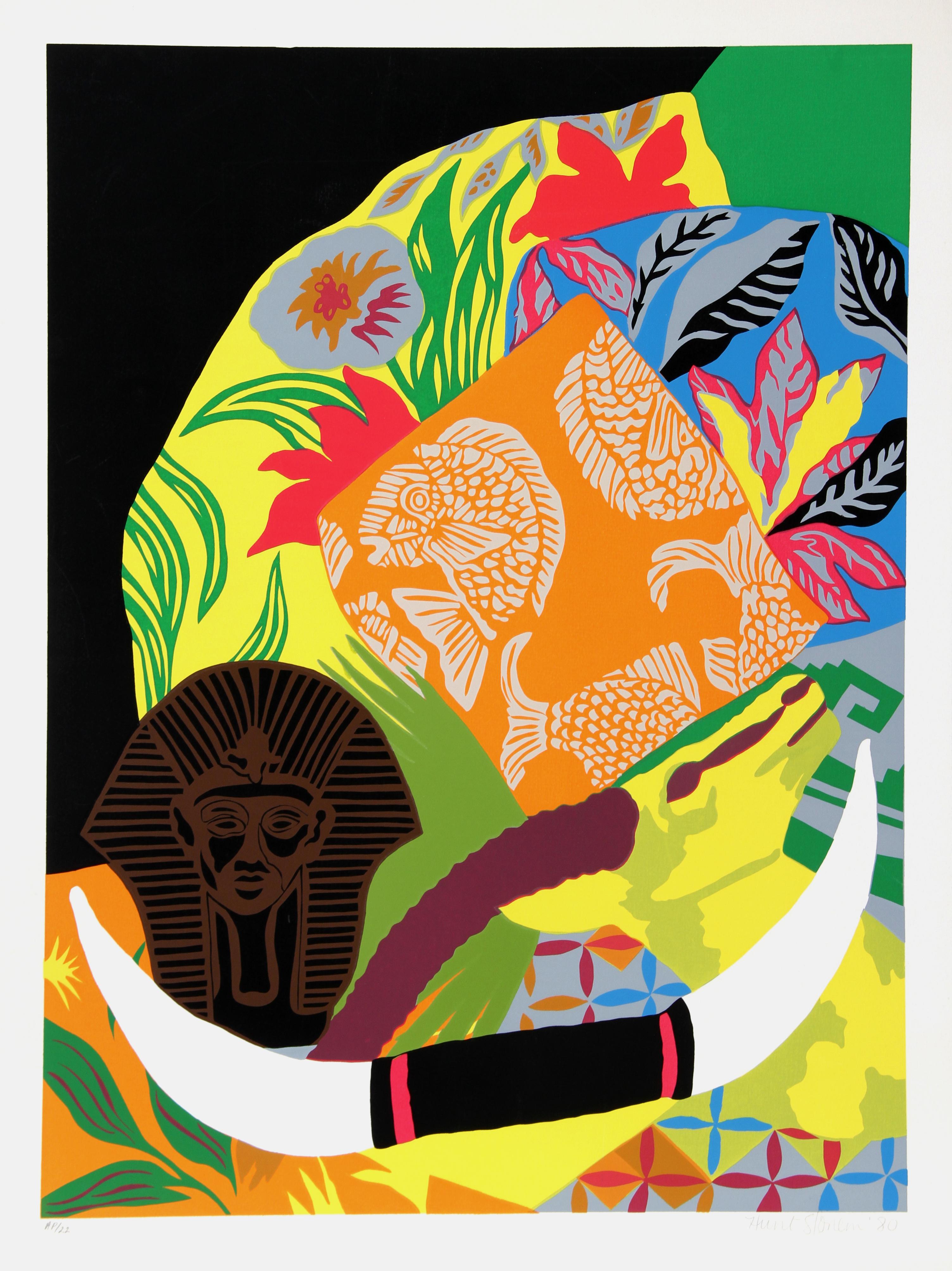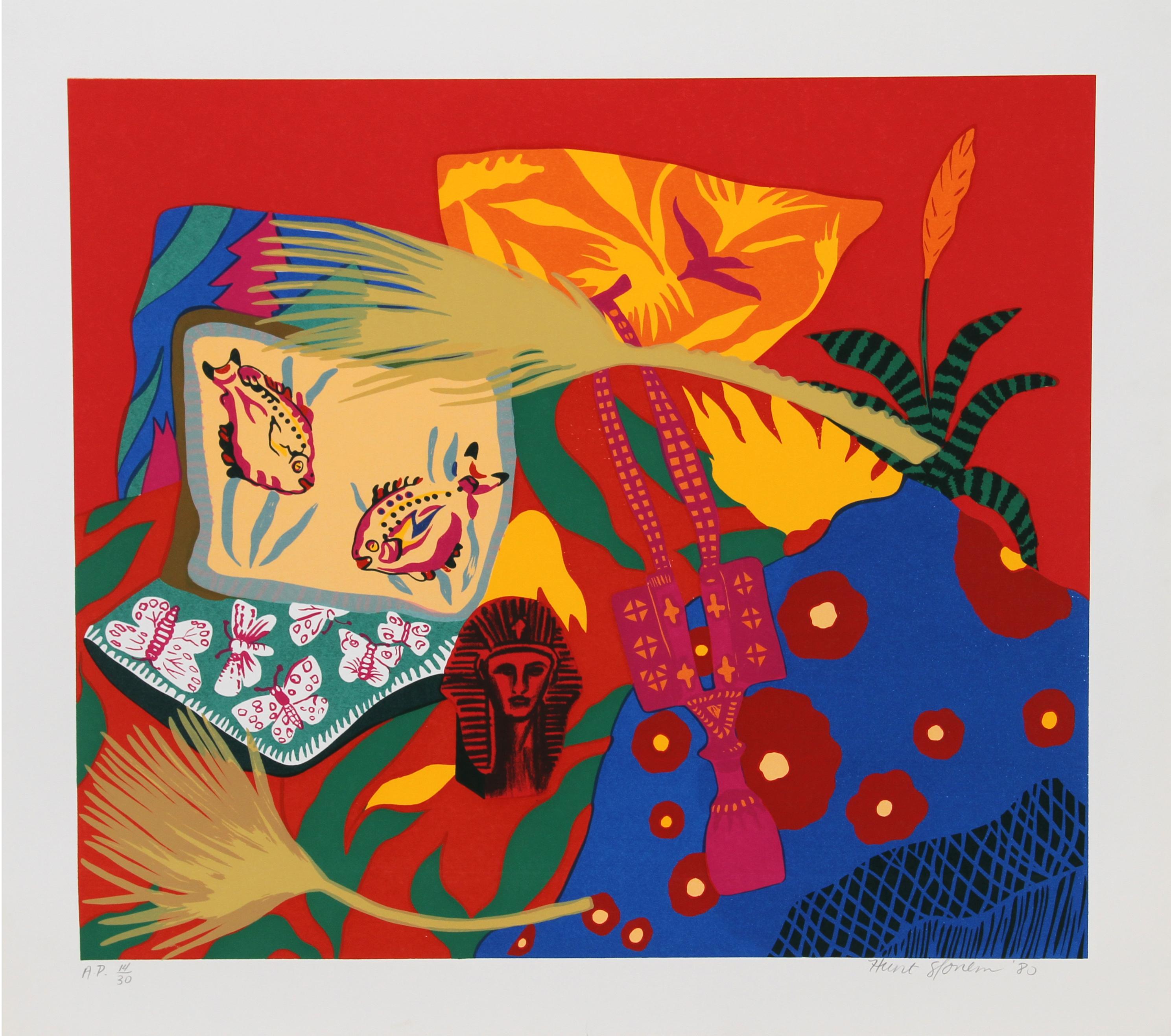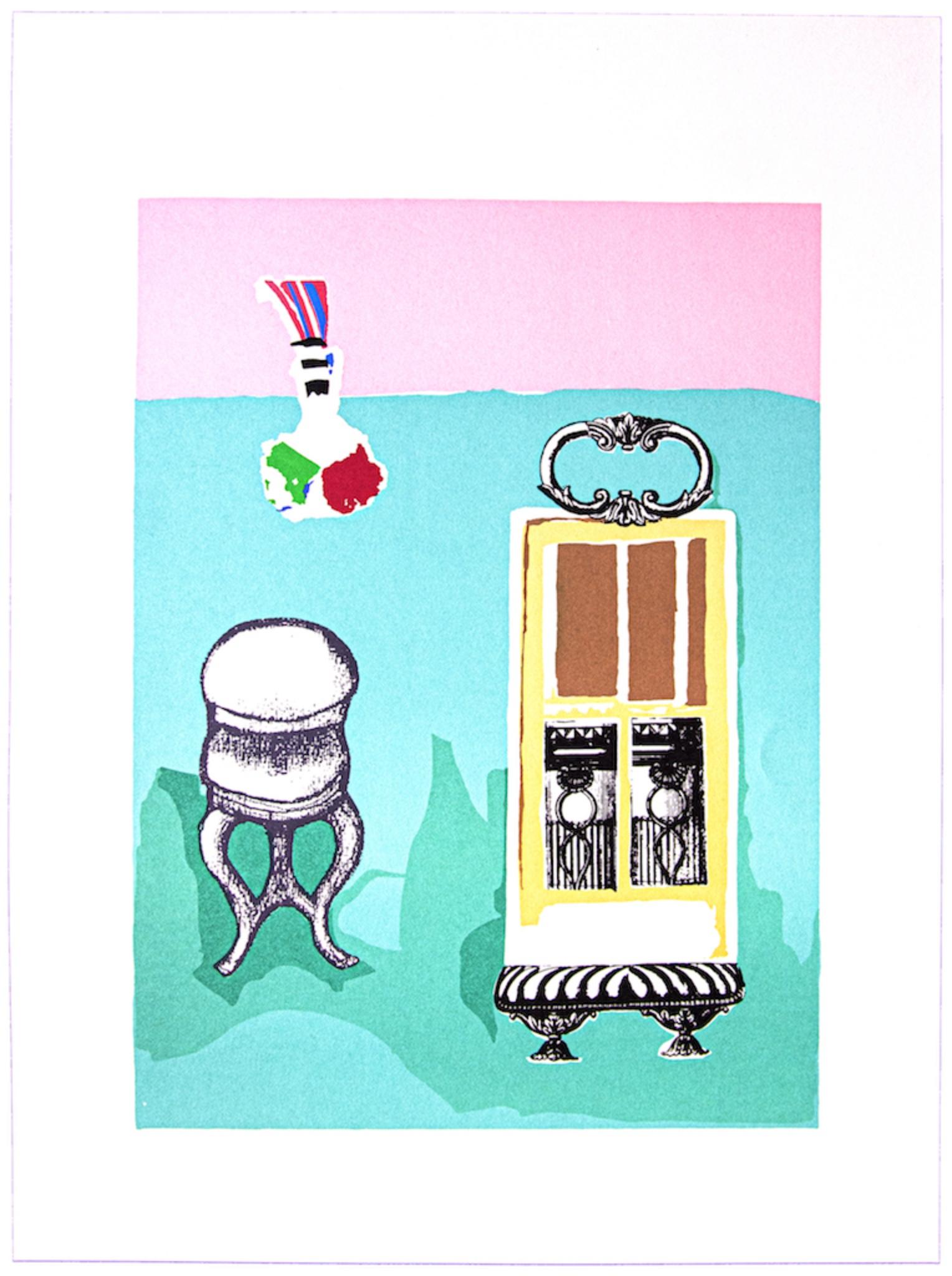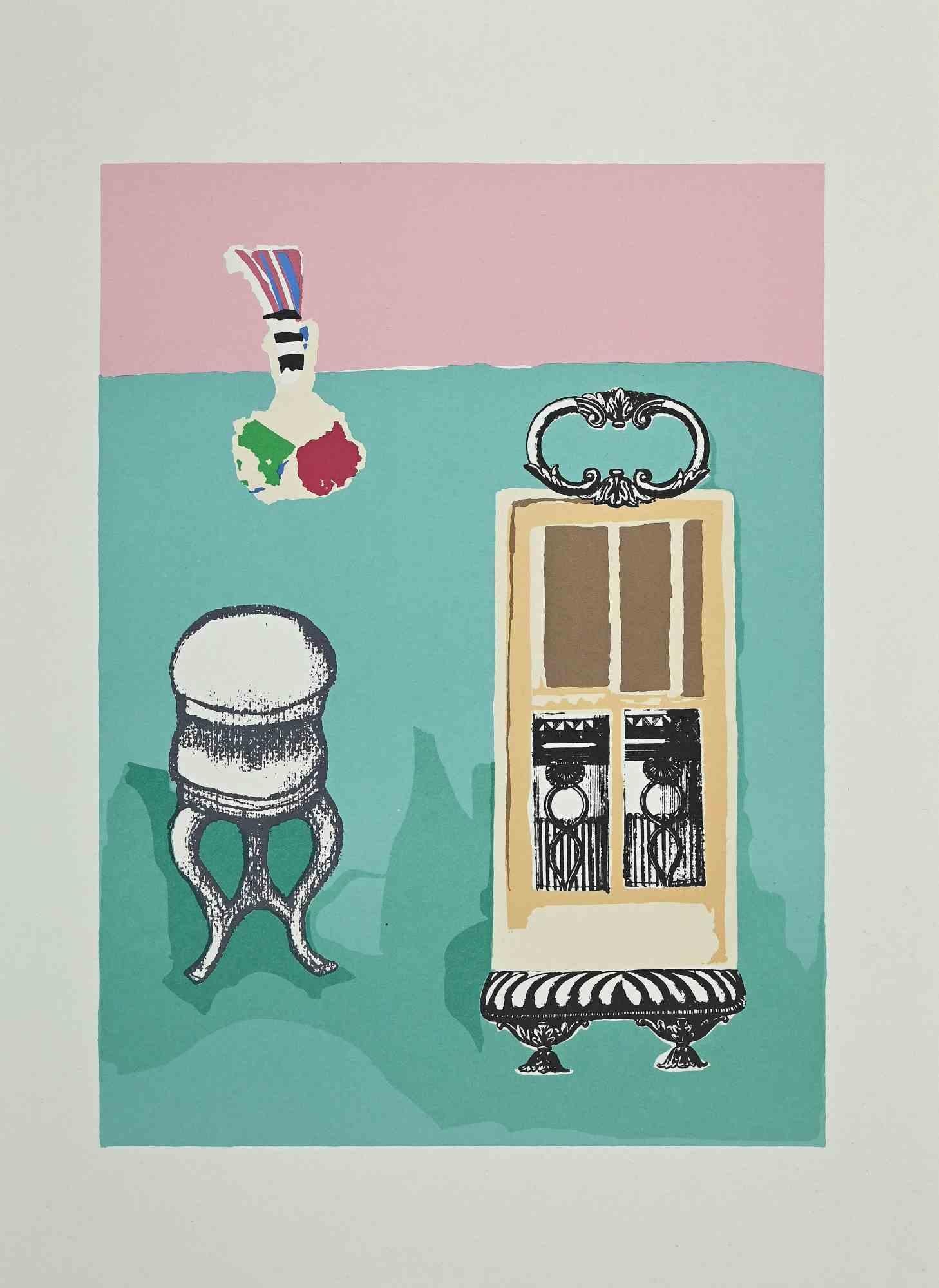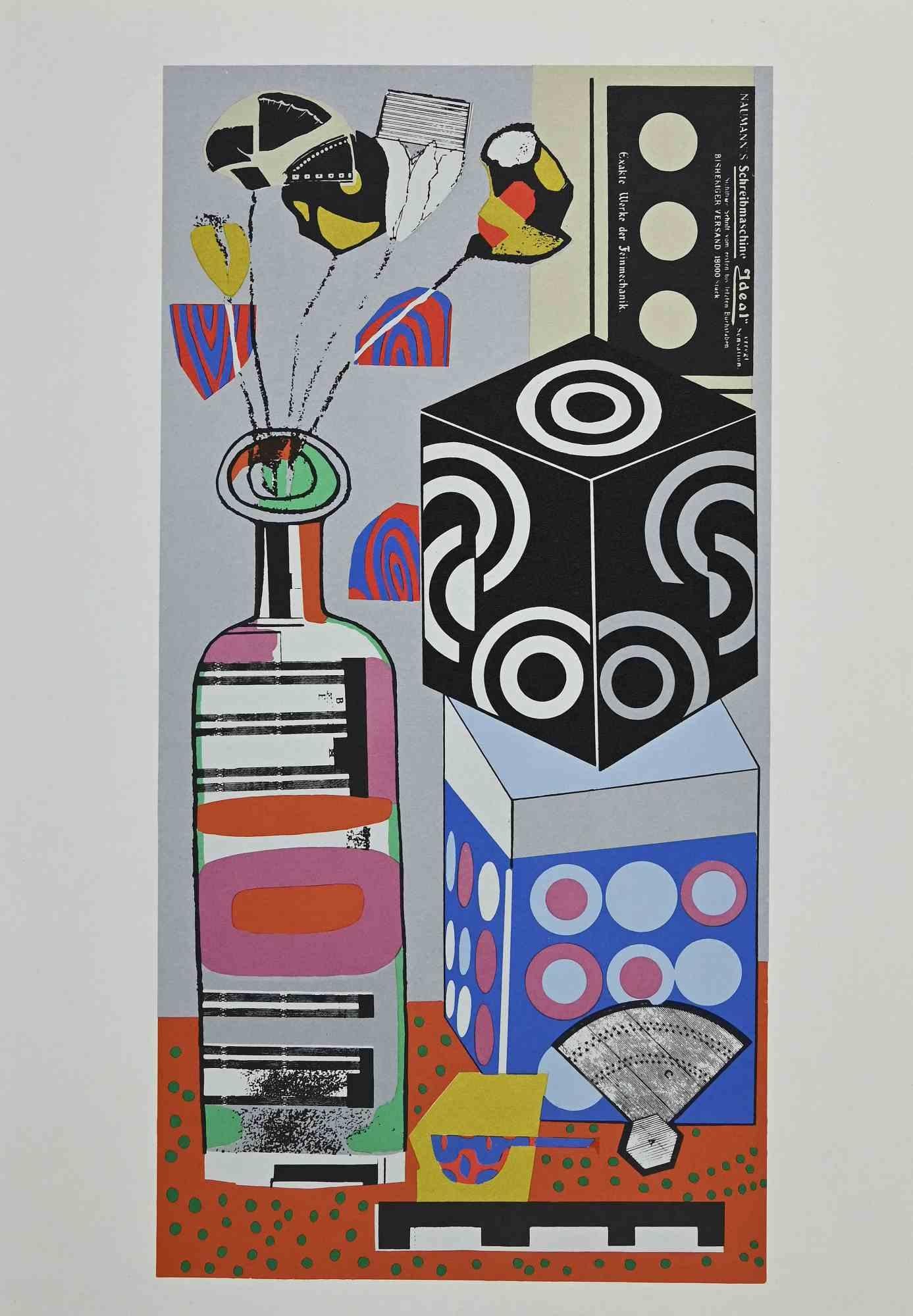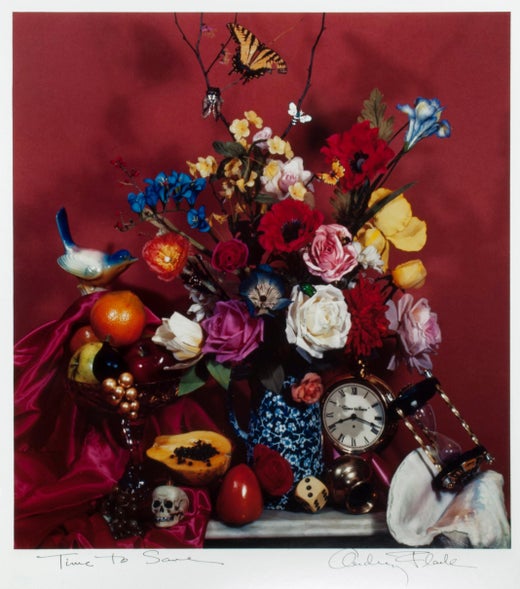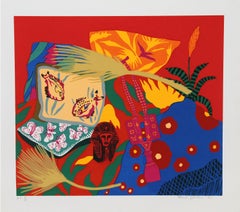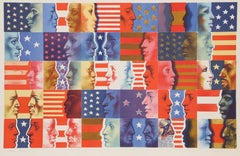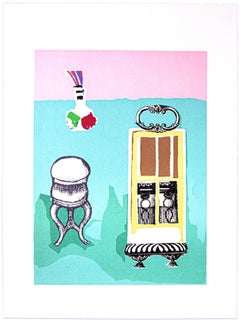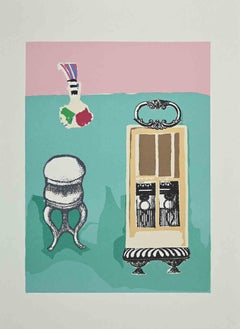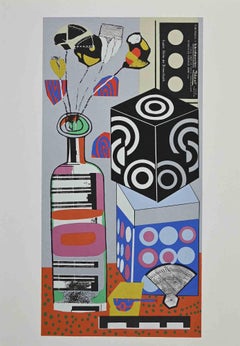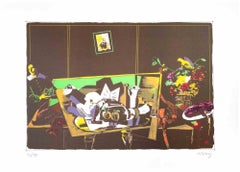Audrey FlackFourth of July Still Life, Pop Art Lithograph by Audrey Flack1975
1975
About the Item
- Creator:Audrey Flack (1931, American)
- Creation Year:1975
- Dimensions:Height: 18.5 in (46.99 cm)Width: 17 in (43.18 cm)
- Medium:
- Movement & Style:
- Period:
- Condition:
- Gallery Location:Long Island City, NY
- Reference Number:Seller: RO166571stDibs: LU46615789632
Audrey Flack
Audrey Flack became known for her Photorealist paintings and was one of the first artists to use photographs as the basis for painting. The genre, taking its cues from Pop art, incorporates depictions of the real and the regular, from advertisements to cars to cosmetics.
Flack's photography, prints and paintings bring in everyday household items like tubes of lipstick, perfume bottles, Hispanic Madonnas, and fruit. These inanimate objects often disturb or crowd the pictorial space, which is often composed as table-top still lives. Flack often brought in actual accounts of history into her Photorealist paintings, such as World War II (“Vanitas”) and Kennedy Motorcade. Women were frequently the subject of her Photorealist paintings.
In her neoclassical public sculpture of gilded bronze angels, muses, and goddesses, Flack mines Greek mythology, presenting the female in an array of archetypal guises. Though some critics have condemned her focus on the classical white female, Flack was an avowed feminist, and many of her sculptures seek to reinvent their subjects and source material.
Flack's early work in the 1950s was Abstract Expressionist; one such painting paid tribute to Franz Kline. Most influential among her early supporters was the Bauhaus artist Josef Albers. It was he who persuaded Flack to take up a scholarship at Yale with the mission of shaking up the institution's stuffy academic reputation.
The ironic kitsch themes in Flack's early work influenced Jeff Koons. But gradually, Flack became a New Realist and then evolved into Photorealism during the 1960s. Her move to the Photorealist style was in part because she wanted her art to communicate to the viewer. Flack was the first Photorealist painter to be added to the collection of the Museum of Modern Art in 1966. Between 1976 and 1978 she painted her “Vanitas” series, including the piece Marilyn.
In the early 1980s, Flack's artistic medium shifted from painting to sculpture. She described this shift as a desire for "something solid, real, tangible. Something to hold and to hold on to."
Flack discussed the fact that she was self-taught in sculpture. She incorporated religion and mythology into her sculpture rather than the historical or everyday subjects of her paintings. Her sculptures often demonstrate a connection to the female form, including a series of diverse, heroic women and goddess figures. These depictions of women differ from those of traditional femininity, but rather are athletic, older, and strong. As Flack described them: "They are real yet idealized... the 'goddesses in everywoman.'"
Flack had claimed to have found the Photorealist movement too restricting and later gained much of her inspiration from Baroque art. She was represented by the Louis K. Meisel Gallery and Hollis Taggart Galleries. Her work is held in the collections of museums around the world, including the Metropolitan Museum of Art, the Museum of Modern Art, the Solomon R. Guggenheim Museum, the Whitney Museum of American Art, the Allen Memorial Art Museum, and the National Gallery of Australia in Canberra, Australia.
Flack was awarded the St. Gaudens Medal from Cooper Union and the honorary Albert Dome professorship from Bridgeport University. She was an honorary professor at George Washington University, a visiting professor at the University of Pennsylvania, and taught and lectured extensively both nationally and internationally.
Find original Audrey Flack art for sale on 1stDibs.
(Biography provided by Lions Gallery)
- ShippingRetrieving quote...Shipping from: Long Island City, NY
- Return Policy
More From This Seller
View All1980s Pop Art Still-life Prints
Screen
1970s Pop Art Figurative Prints
Offset
1980s Pop Art Still-life Prints
Screen
1970s Pop Art Figurative Prints
Lithograph
1980s Pop Art Figurative Prints
Screen
1970s American Modern Figurative Prints
Lithograph
You May Also Like
1970s Modern Still-life Prints
Offset
1970s Modern Figurative Prints
Paper, Offset
1970s Modern Figurative Prints
Paper, Offset
1970s Contemporary Figurative Prints
Lithograph, Offset
1970s Pop Art Figurative Prints
Lithograph, Screen
1980s Contemporary Figurative Prints
Screen
Read More
Romare Bearden’s Humanity Infuses His Bright, Bold Art
Through collage, painting and printmaking, the artist foregrounded Black life in America in revolutionary new ways.
Chryssa’s 1962 Neon Sculpture Was Way ahead of the Art-World Curve
By working with lettering, neon and Pop imagery, Chryssa pioneered several postmodern themes at a time when most male artists detested commercial mediums.
